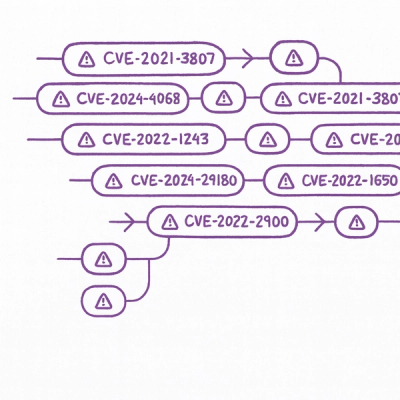
Security News
New Website “Is It Really FOSS?” Tracks Transparency in Open Source Distribution Models
A new site reviews software projects to reveal if they’re truly FOSS, making complex licensing and distribution models easy to understand.
= Uploader
Uploader makes it easy to integrate multiple file uploads into your application using Uploadify or SWFUpload
== ----NOTES---- SWFUpload hasn't been updated in a while and tends to be buggy. We have added uploadify. We recommend using that instead.
== Installation
=== Install the gem: sudo gem install uploader
Installing uploader should also install mime-types and rack. If for some reason it does not then manually install it: sudo gem install mime-types sudo gem install rack
=== Add the gem to Gemfile gem 'uploader'
=== Install jQuery uploader uses jQuery. You'll need to include it in your application. Download it here: http://jquery.com/
Then include it in your layout: <%= javascript_include_tag 'jquery/jquery.js' %>
=== Create an initializer to configure uploader The default settings are fine for most uses, but if you want to use Amazon S3 or configure the size of the resulting images you can configure uploader by creating an initializer:
Uploader.configure do |config| config.enable_s3 = true # Turns S3 on/off config.s3_no_wait = true # Send the file to S3 immediately. If this is false you will need to setup a daemon process to upload to S3. See below. config.keep_local_file = true # Even when uploading to S3 keep the local file. config.disable_halt_nonimage_processing = false # Paperclip will try to generate thumbnails for pdfs unless this is set to true
config.has_attached_file_options = {
:url => "/system/:attachment/:id_partition/:style/:basename.:extension",
:path => ":rails_test/public/system/:attachment/:id_partition/:style/:basename.:extension",
:styles => { :icon => "30x30!",
:thumb => "100>",
:small => "150>",
:medium => "300>",
:large => "660>" },
:default_url => "/images/default.jpg",
:storage => :s3,
:s3_credentials => AMAZON_S3_CREDENTIALS,
:bucket => "assets.example.com",
:s3_host_alias => "assets.example.com",
:convert_options => {
:all => '-quality 80'
}
}
end
=== Create a model for uploads. Create an 'Upload' model in upload.rb.
class Upload < ActiveRecord::Base
include Uploader::Models::Upload
# only allow images:
# validates_attachment_content_type :file, :content_type => ['image/jpeg', 'image/pjpeg', 'image/jpg']
# limit uploads to 10 MB
# validates_attachment_size :local, :less_than => 10.megabytes
# The following method is implemented in the upload model mixin. This is the method destroy will check to see if
# the user has permission to delete the object. Add additional logic as needed or if the existing logic
# looks fine then feel free to delete this comment and the can_edit? method.
def can_edit?(check_user)
return false if check_user.blank?
check_user == self.creator
end
end
=== Add multiple file uploads to one of your models
Your uploads will need a parent object to attach to. For example, a user might have many files:
class User < ActiveRecord::Base has_many :uploads, :as => :uploadable, :order => 'created_at desc', :dependent => :destroy
def can_upload?(check_user)
self == check_user
end
end
or a photo album might have many photos
class PhotoAlbum < ActiveRecord::Base has_many :photos, :as => :uploadable, :order => 'created_at desc', :dependent => :destroy
def can_upload?(check_user)
self.editors.include?(check_user)
end
end
Note that in both examples there is an implementation of 'can_upload?'. This method must be included in any parent object and will control who has permission to upload files.
=== The application controller Be sure you have turned on protect from forgery. This is required for uploader to get the appropriate tokens from your Rails application. It is also a good idea and is the default in new Rails applications.
protect_from_forgery # See ActionController::RequestForgeryProtection for details
=== The uploads controller You can modify the upload controller behavior by inheriting from the uploader controller. For example, you might want to require that users be logged in to upload a file. There are a number of methods in the uploads controller that contain default functionality that you may consider overriding.
Be sure to modify your routes file. Add the following line to ensure that your application uses the new uploads controller instead of directly using the one inside the gem:
==== routes.rb
resources :uploads do collection do post :multiupload end end
===== controller class class UploadsController < Uploader::UploadsController
prepend_before_filter :login_required
protected
# The default 'get_upload_text' method throws an exception. You must override this method in your controller. It
# is used by the swf upload call to generate the html to be returned to the client.
# Here's an example:
def get_upload_text(upload)
render_to_string( :partial => 'uploads/upload_row', :object => upload, :locals => { :parent => @parent } )
end
# The existing method will handle most cases but you might choose a different message or a different redirect:
def permission_denied
message = t("uploader.permission_denied")
respond_to do |format|
format.html do
flash[:notice] = message
redirect_to get_redirect
end
format.js { render :text => message }
format.json { render :json => { :success => false, :message => message } }
end
end
# Simply attempts to redirect to the parent object. You might want to build something more sophisticated that
# redirect to different areas of you site depending on the type of object that was uploaded or on based on the parent.
# source can be :destroy_success, :create_success, :create_failure, :permission_denied
def get_redirect
@parent
end
# The default action is to call 'can_upload?' on the parent object. Be sure to implement 'can_upload?(check_user) on
# your parent objects
def has_permission_to_upload(user, upload_parent)
upload_parent.can_upload?(user)
end
# By default the controller will use a model named 'Upload' to do a destroy. If you want to use a different model
# you'll need to override 'set_upload_for_destroy in your controller to find the object using a different object.
# For example:
def set_upload_for_destroy
@upload = Photo.find(params[:id])
end
end
=== Configure your views. You'll need something like this in your layout so that uploader can add in the required css and javascript files.
<%= yield :head -%>
Then to add an upload form:
Uploadify version (recommended): <%= uploadify_form(parent_object) %>
OR
SWFUpload version: <%= upload_form(parent_object) %>
See the uploader_helper.rb file for options. parent_object should be the object which owns the uploads. ie a user, photo_album, etc.
=== Support for Html 5 Drag and Drop file uploads The new XMLHttpRequest object will submit the raw file data as the only data in the request. Uploader provides support for this functionality. The file name should be specified in the header. "X-File-Upload" must be set to true or the request will be ignored. Here's an example of how to send data:
var xhr = new XMLHttpRequest(); xhr.open('POST', '/uploads', true); xhr.setRequestHeader("Content-Type", file.type); xhr.setRequestHeader("X-File-Name", file.fileName); xhr.setRequestHeader("X-File-Size", file.fileSize); xhr.setRequestHeader("X-File-Upload", true); xhr.send(file);
=== Rake Tasks
rake uploader:sync # will copy all required assets (css, javascript, images, migrations, etc) from uploadify into your project rake db:migrate #This will create an uploads table for you. If you selected a different name for your model you will need to modify the migration accordingly.
== WARNING The migration will drop any existing 'uploads' table you have in place
== Amazon s3
If you'd like to store your uploads on Amazon's S3 service there are a few extra steps involved. See the example file above to view the options in context.
=== Turn on s3 Set the enable_s3 option to true in acts_as_uploader config.enable_s3 = true
Pass in your s3 credentials config.has_attached_file_options = { :s3_credentials => File.join(::Rails.root.to_s, 'config', 's3.yml') }
=== Setup your credentials Create a file named s3.yml in your configuration directory and add the following lines:
access_key_id: PUT YOUR KEY HERE secret_access_key: PUT YOUR SECRET ACCESS KEY HERE
=== Turn on the Daemon process There are a number of timing issues that you will run into if you attempt to upload files directly to s3. To overcome that problem uploader includes a daemon process which will send the files to Amazon asynchronously. Note that the uploader will leave your local copy in place.
Add the daemons gem and plugin: sudo gem install daemons
Then inside your Rails project: script/plugin install git://github.com/dougal/daemon_generator.git script/generate daemon amazonaws
If you have already run rake uploader:sync it will have already copied a file called amazonaws.rb into lib/daemons. Running script/generate daemon amazonaws will create the other files required to support that process. You will get a prompt "overwrite lib/daemons/amazonaws.rb?". Answer 'n'o as the file is already setup.
To start the daemon locally: RAILS_ENV=development lib/daemons/amazonaws_ctl start
There is also an app wide control script that you can add to capistrano: ./script/daemons [start|stop|restart]
Learn more about the custom daemon gem with Ryan Bates screencast: http://railscasts.com/episodes/129-custom-daemon
== Use Rake to send files to s3 uploader includes a task capable of sending files to s3 but it makes an assumption that the model you are interacting with is named 'Upload'.
rake uploader:upload_to_s3
If you want to use a different model or several models just add a rake task to your project:
desc 'Send all uploads to S3. (Will only send uploads from a model named Upload)' task :upload_to_s3 do
uploads = Upload.pending_s3_migrations
uploads.each do |upload|
upload.remote = upload.local
upload.save!
end
photos = Photo.pending_s3_migrations
photos.each do |photo|
photo.remote = photo.local
photo.save!
end
end
== Setup Domains If you use Amazon's S3 service you can setup a cname to clean up your urls. Configure your s3 bucket as above:
:bucket => "assets.example.com" :s3_host_alias => "assets.example.com"
Your assets will be available at assets.example.com.s3.amazon.com. You can then create a CNAME in your DNS entries to point "assets.example.com" to "assets.example.com.s3.amazon.com". Your assets will then appear to be be served from assets.example.com even though they are loaded from Amazon.
== Other Stuff
If you'd like to add an ajax delete to your uploads page this code might come in handy.
Say you have chosen to display your upload in a table. Your code might look like the following. Note that there are a number of assumptions made in this code. Modify it to suite your needs.
>I put the following in my main upload view <% content_for :javascript do -%> <% end -%>
The following jQuery code will do an ajax delete for you
function setup_submit_delete(){ jQuery(".submit-delete").live('click', function() { // if(!confirm("Are you sure?")){ // return false; // } jQuery(this).parents('.delete-container').fadeOut(); var form = jQuery(this).parents('form'); jQuery.post(form.attr('action') + '.json', form.serialize(), function(data){ var json = eval('(' + data + ')'); if(!json.success){ jQuery.jGrowl.info(json.message); } }); return false; }); }
=== Development notes The swfupload.js and swfupload.queue.js have been modified according to this forum post: http://www.swfupload.org/forum/generaldiscussion/2053
Copyright (c) 2010 Tatemae.com, released under the MIT license
FAQs
Unknown package
We found that uploader demonstrated a not healthy version release cadence and project activity because the last version was released a year ago. It has 3 open source maintainers collaborating on the project.
Did you know?

Socket for GitHub automatically highlights issues in each pull request and monitors the health of all your open source dependencies. Discover the contents of your packages and block harmful activity before you install or update your dependencies.

Security News
A new site reviews software projects to reveal if they’re truly FOSS, making complex licensing and distribution models easy to understand.

Security News
Astral unveils pyx, a Python-native package registry in beta, designed to speed installs, enhance security, and integrate deeply with uv.

Security News
The Latio podcast explores how static and runtime reachability help teams prioritize exploitable vulnerabilities and streamline AppSec workflows.